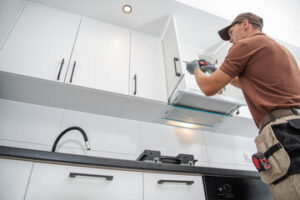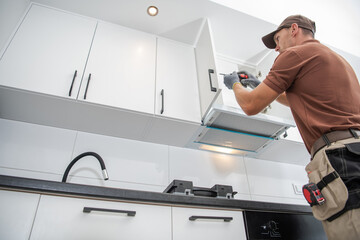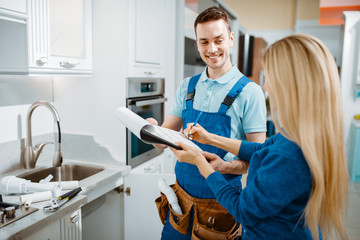Kitchen Remodeling Houston TX enhances both functionality and visual appeal. A well-planned kitchen transforms meal preparation and social gatherings. Thoughtful design ensures that the space meets both practical and aesthetic needs. A modern kitchen reflects personal style while improving efficiency.
The layout serves as the foundation of a successful kitchen remodel. An efficient work triangle minimizes movement between the sink, stove, and refrigerator. Open layouts create a sense of space and improve flow. Strategic placement of appliances enhances convenience and accessibility.
Cabinetry plays a crucial role in both storage and design. Custom-built cabinets maximize available space and reflect individual taste. Open shelving adds a contemporary touch and allows for easy access. Mixing closed and open storage options balances form and function.
Countertops define the character and utility of the kitchen. Durable and easy-to-maintain surfaces support daily use. Coordinating countertop materials with the overall color scheme creates cohesion. Well-placed countertops enhance meal preparation and presentation.
Lighting transforms the atmosphere and usability of the kitchen. Layered lighting combines task, ambient, and accent lights. Under-cabinet lights improve visibility during food preparation. Pendant lights over islands add visual interest and warmth.
Backsplashes protect walls and introduce design elements. Patterned or textured tiles create focal points. Coordinating backsplash colors with countertops and cabinets ensures harmony. A well-designed backsplash combines practicality with style.
Flooring selection impacts both comfort and durability. Water-resistant and easy-to-clean materials suit high-traffic areas. Warm-toned flooring enhances a welcoming atmosphere. Consistent flooring throughout connected spaces promotes a cohesive look.
Appliance upgrades improve functionality and energy efficiency. Modern appliances offer smart features and customizable settings. Sleek finishes and integrated designs create a seamless look. Energy-efficient models reduce utility costs and environmental impact.
Islands enhance both workspace and social interaction. A well-placed island serves as a prep station, dining area, and storage solution. Seating options make the island a central gathering spot. Proper size and positioning ensure that the island enhances flow.
Storage solutions maximize organization and accessibility. Pull-out shelves and deep drawers increase usable space. Vertical storage and hanging racks reduce clutter. Smart storage design improves kitchen efficiency and cleanliness.
Color schemes influence the mood and perception of the space. Light colors create an open and airy feel. Bold accents introduce personality and contrast. A balanced color palette unifies the design and enhances visual flow.
Sink placement and design impact both functionality and style. Deep basins accommodate large cookware. Modern faucet designs offer flexibility and convenience. Undermount sinks create a sleek, clean look.
Open-concept designs connect the kitchen with surrounding spaces. Removing barriers increases natural light and improves interaction. Consistent design elements tie the kitchen to adjacent areas. Open layouts enhance both social and practical use.
Pantries provide additional storage and organization. Walk-in or built-in pantries store bulk items and small appliances. Adjustable shelving increases flexibility. A well-organized pantry improves meal planning and preparation.
Ventilation maintains air quality and temperature control. Range hoods remove cooking odors and excess heat. Quiet and efficient models enhance comfort without disrupting conversation. Proper ventilation ensures a fresh and comfortable atmosphere.
Material selection impacts both style and maintenance. Durable and stain-resistant materials withstand daily use. Mixing textures adds depth and interest. High-quality materials ensure long-term beauty and performance.
Eco-friendly design reduces environmental impact. Recycled and sustainable materials support green living. Energy-efficient lighting and appliances lower utility costs. Water-saving fixtures contribute to conservation efforts.
Integrated seating areas increase functionality and comfort. Built-in benches and barstools create casual dining options. Comfortable seating encourages social interaction. Thoughtful placement of seating enhances flow and convenience.
Smart technology adds convenience and efficiency. Voice-activated lighting and temperature controls improve usability. Smart refrigerators and ovens support meal planning and cooking. Technology integration enhances both function and comfort.
Accent walls introduce texture and color. Exposed brick, wood paneling, or bold paint colors create focal points. Accent walls define the space without overwhelming the design. Strategic placement enhances visual interest.
Undercabinet storage increases usable space. Hooks, racks, and magnetic strips keep utensils and tools within reach. Hidden storage options reduce countertop clutter. Efficient undercabinet storage improves functionality.
Open shelving creates a modern and accessible look. Displaying dishware and decorative items adds personality. Floating shelves provide flexible storage solutions. Proper placement balances openness with organization.
Water fixtures contribute to both style and function. High-pressure faucets improve cleaning efficiency. Touchless designs enhance hygiene and convenience. Coordinating fixtures with hardware creates a cohesive look.
Mixing metals adds texture and dimension. Combining brass, stainless steel, and matte finishes creates contrast. Balanced metal tones prevent visual overload. Thoughtful coordination enhances overall design harmony.
Vertical storage solutions optimize limited space. Tall cabinets and pull-out racks increase capacity. Narrow pull-outs improve access to small items. Vertical organization enhances both aesthetics and functionality.
Compact appliances suit small kitchens and maximize space. Slim refrigerators, drawer dishwashers, and built-in microwaves provide full functionality. Space-saving designs create a streamlined look. Compact appliances improve usability without compromising style.
Touchless and smart faucets improve convenience and hygiene. Motion-sensor technology reduces water waste. Temperature control settings increase comfort. Smart faucets enhance both form and function.
Reflective surfaces increase light and depth. Glossy finishes on cabinets and countertops reflect natural and artificial light. Mirrors and glass accents create a sense of openness. Reflective elements enhance brightness and space perception.
Hidden outlets and charging stations increase functionality. Under-cabinet and pop-up outlets maintain a clean look. Built-in charging docks keep devices accessible. Concealed wiring enhances both safety and aesthetics.
Custom cabinetry increases storage and personalization. Adjustable shelving and specialty drawers maximize space. Custom finishes reflect individual style. Well-designed cabinetry enhances both organization and visual appeal.
Non-slip flooring improves safety and comfort. Textured surfaces provide grip in wet conditions. Shock-absorbing materials reduce strain during long cooking sessions. Safety-conscious flooring enhances usability.
Multi-functional islands increase flexibility. Built-in sinks, cooktops, and storage expand functionality. Seating and prep areas encourage social interaction. A well-designed island improves both flow and efficiency.
Art and decorative accents add personality. Framed prints, sculptures, and ceramics reflect personal taste. Rotating decor items refresh the look over time. Art elements enhance visual interest and warmth.
Sliding doors and pocket doors save space. Hidden tracks and soft-close mechanisms improve function. Sliding doors increase accessibility and flow. Well-placed doors enhance both convenience and style.
Low-maintenance materials simplify cleaning and upkeep. Stain-resistant countertops and backsplashes reduce maintenance. Durable flooring withstands heavy use. Low-maintenance materials preserve long-term beauty and function.
Soft-close hinges and drawer slides enhance comfort. Quiet mechanisms reduce noise and wear. Soft-close features increase the lifespan of cabinetry. Smooth operation improves daily use.
Integrated recycling and composting systems support sustainability. Built-in bins simplify waste sorting. Easy-to-clean compartments reduce odors and mess. Eco-friendly systems enhance convenience and environmental responsibility.
Hidden lighting creates a clean and modern look. Recessed lights and LED strips highlight key areas. Concealed lighting enhances atmosphere and function. Soft illumination increases warmth and comfort.
Convertible spaces increase versatility. Folding tables and extendable countertops adjust to different needs. Modular designs support flexible use. Convertible spaces enhance both functionality and style.
Kitchen remodeling combines creativity with practicality. Thoughtful design ensures that the space meets both current and future needs. Smart choices in layout, materials, and technology enhance usability and aesthetic appeal. A well-executed remodel transforms the kitchen into a beautiful and efficient gathering place.



